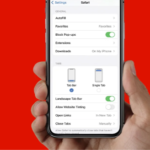Traffic congestion is more than just a daily frustration—it’s a major drain on productivity, fuel, and public health. As urban populations grow, the demand for efficient and safe transportation systems becomes more urgent. That’s where strategic road traffic plans come into play. These plans are essential tools used by governments, city planners, and transportation departments to manage traffic flow, reduce congestion, and improve road safety.
What Are Road Traffic Plans?
Road traffic plans are comprehensive strategies designed to control and direct traffic movement in urban and rural areas. These plans consider a wide range of factors including vehicle volume, pedestrian movement, road capacity, environmental concerns, and public transportation integration. Their ultimate goal is to create a safer, more efficient roadway network for all users.
Key Elements of a Road Traffic Plan
- Traffic Flow Optimization
One of the core goals of any traffic plan is to ensure smooth movement across the network. This might include the installation of intelligent traffic signals that adapt to real-time conditions, redesigning intersections to improve turn efficiency, or creating dedicated lanes for buses and cyclists. - Safety Enhancements
Reducing the number and severity of road accidents is a major priority. Planners use data on high-risk areas to make improvements such as adding crosswalks, speed bumps, better lighting, or clearer signage. Public awareness campaigns also play a role in changing driver behavior. - Public Transportation Integration
Effective road traffic plans support and promote the use of public transportation. This often involves adding bus lanes, improving access to transit stops, and syncing traffic signals with transit schedules to reduce delays. - Sustainable Mobility
With growing environmental concerns, many traffic plans now incorporate green initiatives. These include encouraging walking and cycling, reducing vehicle emissions by limiting access to certain areas, and promoting electric vehicle infrastructure. - Technology and Data Use
Modern traffic plans are data-driven. Cities are increasingly using traffic cameras, sensors, and GPS data to understand real-time traffic patterns and predict future needs. This allows for more responsive and flexible planning.
Benefits of a Well-Designed Traffic Plan
A successful traffic plan leads to a noticeable improvement in daily life. Commuters spend less time in traffic, cities become safer for pedestrians and cyclists, and pollution levels can decrease. Economically, businesses benefit from more reliable delivery times and better access for customers and employees.
Challenges in Implementation
Despite the benefits, implementing road traffic plans can be complex. They often require significant funding, cross-department collaboration, and public support. Infrastructure changes can also cause temporary disruption. However, with clear communication and community engagement, these hurdles can be overcome.
Final Thoughts
As our cities continue to expand, the need for forward-thinking road traffic plans becomes more critical. By focusing on safety, efficiency, sustainability, and technology, urban centers can transform their roadways into systems that work for everyone. Whether it’s reducing your morning commute or making roads safer for your kids, traffic planning plays a bigger role in daily life than most people realize.











